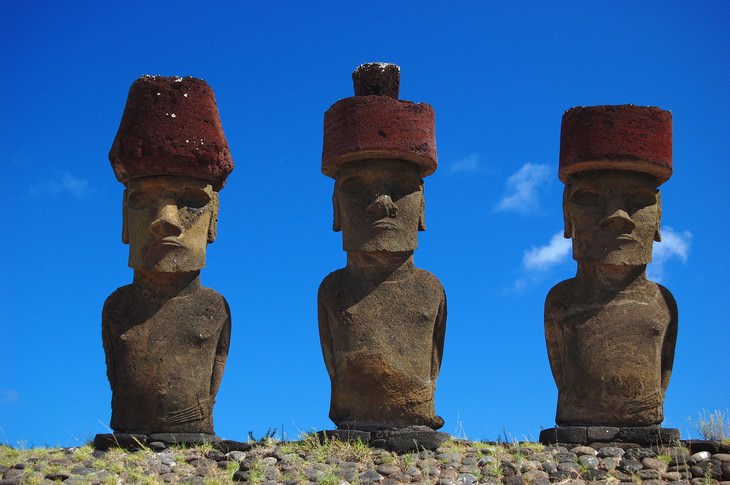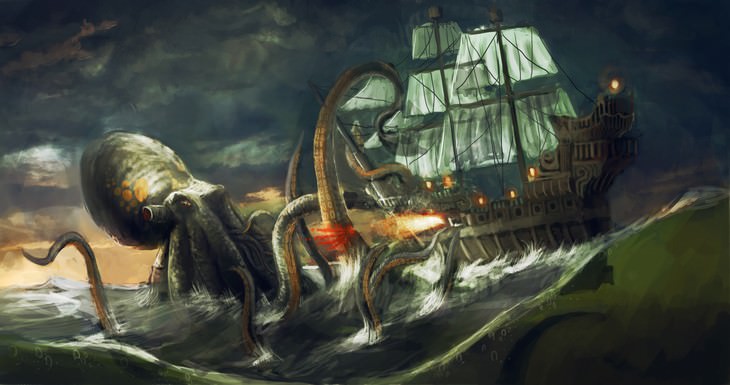1. Will-o'-the-wisps
What are they? Will-o'-the-wisps, also commonly known as jack-o’-lanterns come in folklore, were believed to be ghosts or evil spirits seen at night over swamps, marshes, and cemeteries in the form of a flickering light.
According to legends from all corners of the Earth, Will-o'-the-wisps are otherworldly creatures that aim to deceive travelers by directing them to light near a trap.
Humans sure have a tendency to mystify things they do not understand, and this case supports this statement like no other. As it is the case with many legends that boil down to a previously-inexplicable natural phenomenon, will-o’-the-wisps, too, can be explained by science.

What are they, really? As a matter of fact, the working theory for will-o’-the wisps is spontaneous combustion caused by the exposure of some flammable gases to air. Gases like diphosphate, a common side-product of the degradation of organic matter by bacteria, can explode when exposed to oxygen.
In places where a lot of organic matter is processed, such as marshes and cemeteries, these gases are present in high concentrations and can cause hovering fires and flickering lights that disappear as they burn out. Mystery solved.
2. Earthquake lights
What are they? For centuries, witnesses from all around the world documented strange lights appearing before, during and after major earthquakes. These lights can manifest themselves differently: from flashing blue lights around the horizon to bolts of lightning shooting out of the ground.
They can appear weeks before an earthquake strikes and can occur in the radius of 160 square km (approximately 62 square miles) from the epicenter of the catastrophe. Until recently, no one had any idea why these phenomena occur.
What are they, really? The mystery was cracked by a research team of geologists, who studied the 65 well-documented cases of earthquake lights in 2014 and determined that certain volcanic rocks were to blame for the anomaly.
Under very specific geological and weather conditions, an electrical charge is emitted from these rocks as a result of a spontaneous increase in pressure from the earthquake. This electrical charge then spreads throughout the air and ionizes it. Light is emitted during this chemical reaction, which is exactly what causes the mysterious flashes in the sky.
3. Hats on Easter Island Statues
What are they? Moai are the mascots of the Easter Islands. These enormous statues were built by the Rapa Nui people, the aboriginal inhabitants of the Polynesian islands, during 13-15 century. The statues are enormous, the largest one being 10 m (33 ft) high and weighing 82 tons.
As you can see in the picture above, some of the Moai have hats. These simple headpieces puzzled scientists for decades, as the Rapa Nui somehow managed to move the 12-ton accessories on the tops of their statue-heroes’ heads without a crane.
How did they do it? In 2018, a meticulous research project that did some serious 3D-modeling proved that this was possible by the following technique. First, a cylinder was carved out of the red rock from the other side of the island, which was rolled to the final location and up a specifically-created ramp leading to the head of the statue.
15 people were necessary for the task: they pulled the cylinder up the ramp using ropes. The cylinder was then placed in its final position on the statue’s head and molded into its final shape. The ramp was cleared up, and that’s how the Moai got their long-awaited 2m-tall (6.5 ft) headpieces.
4. The Bloop
What is it? In 1997, news agencies exploded with the story about the super loud mysterious sound recorded underwater at the coast of South America dubbed the Bloop.
Researchers detected the sound as they were searching for underwater volcanoes, and at some point, they believed that some gigantic animal might have emitted it.
What is it, really? Only in 2005 scientist had sufficient evidence to claim that the Bloop was not a sea monster lurking in the depths of the ocean, but the sound of an icequake. The term describes the process when an enormous chunk of ice cracks off a glacier and falls into the ocean.
Reviewing hours of recordings from around the world, the researchers found a perfect match. The sounds of ice breaking off the glaciers in Antarctica sounded just like the mysterious 1997 Bloop, and the mystery was solved.
5. Sailing Stones
What are they? Death Valley in California is literally one of the hottest spots on Earth. Apart from its record high temperatures, it contains the so-called Racetrack, a dried out lake, which provides the desert setting for the mysterious walking or sailing stones.
As unbelievable as it may sound, these ordinary rocks can “travel” from one place to another up to a 450 m (1476 ft) distance. The rocks are generally small and medium in size (up ‘til 45 cm (18 in) in diameter), and they leave tracks behind as they move in straight or zig-zag trajectories.
What are they, really? It turns out that this mystery is not a prank, but rather a very difficult physics problem. A close observation of the rocks conducted in 2011 proved that the stones move in the winter when a thin layer of water coats the surface of the lake.
At night, the water freezes, but it melts a little during the day, which creates floating ice sheets around the stone. With a particularly strong gust of wind, the ice sheet slowly carries the rocks with a maximum speed of 5 m (16 ft) per minute.
Scientists know this is true because they have witnessed the process themselves, as well as conducted an in-lab replication of the process, which yielded identical results.




